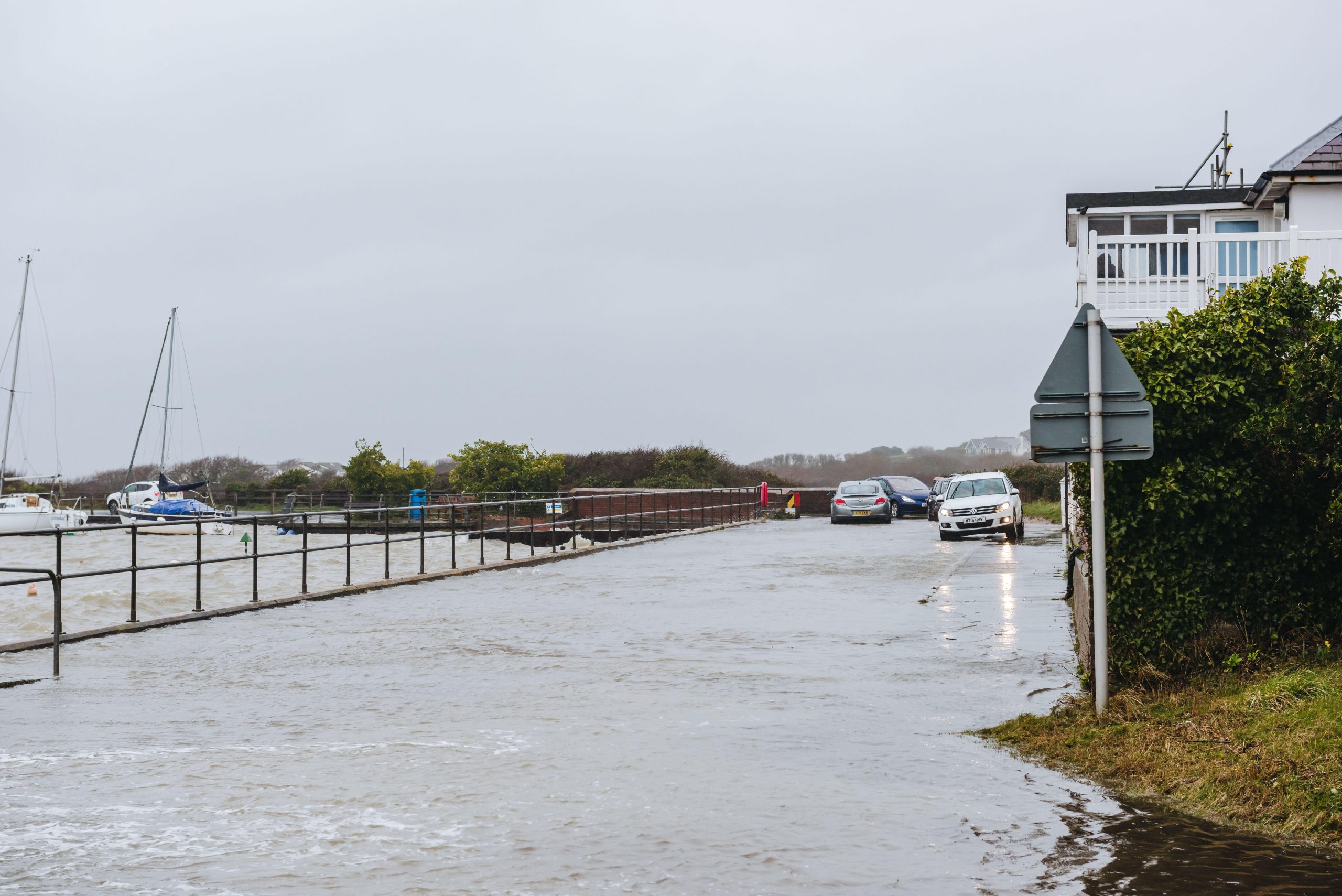Portsmouth's Coastal Defences: Protecting The Solent Since The 1500s
Editor's Notes: _Portsmouth's Coastal Defences: Protecting The Solent Since The 1500s_ has published today, 20th July 2023. The topic is important to read for historical and strategic reasons.
Our team has analyzed and dug information, we put together this Portsmouth's Coastal Defences: Protecting The Solent Since The 1500s guide to help target audience make the right decision.
Key differences or Key takeaways:
| Portsmouth's Coastal Defences: Protecting The Solent Since The 1500s |
|---|
| - The coastal defences of Portsmouth have been vital to the city's survival. |
| - Portsmouth's Coastal Defenses includes a series of forts, gun batteries and other defenses designed to protect Portsmouth from enemy attack. |
| - Demonstrate the importance of Portsmouth's coastal defences and their role in protecting the Solent. |
Main article topics:
- The history of Portsmouth's coastal defences.
- The different types of defences that have been used to protect Portsmouth.
- The importance of Portsmouth's defences to the city and to the country.
- The challenges facing Portsmouth's coastal defences in the future.
FAQ
This FAQ section provides answers to common queries regarding Portsmouth's Coastal Defences, a historical fortification system constructed to protect the Solent region.
Post from Solent Ships - Source www.youtube.com
Question 1: What is the historical significance of Portsmouth's Coastal Defenses?
The coastal defenses have played a crucial role in safeguarding the Solent, a strategic waterway, from potential naval attacks. Their construction began in the 16th century, under King Henry VIII, and evolved over time to meet the changing demands of warfare.
Question 2: Which key forts are part of the coastal defense system?
Amongst the prominent forts are Fort Nelson, Fort Blockhouse, Southsea Castle, and Spitbank Fort, each holding specific defensive functions and contributing to the overall protection of the Solent.
Question 3: What is the present-day usage of these coastal defenses?
While their initial military purpose has diminished, many of the forts have been repurposed for modern use. Fort Nelson is now a museum showcasing its historical significance. Other forts serve as residential or commercial spaces, preserving their architectural heritage while adapting to contemporary needs.
Question 4: How do these defenses relate to Portsmouth's maritime history?
Portsmouth has long been a significant naval base in England, and the coastal defenses have been integral to its maritime heritage. The presence of these fortifications contributed to Portsmouth's status as a key port and shipbuilding center, reflecting its historical importance in British naval defense.
Question 5: What are the ongoing conservation efforts for the coastal defenses?
Preserving and restoring these historical structures is recognized as a priority. Organizations and government agencies work to maintain the integrity and accessibility of the forts. Restoration efforts aim to protect these landmarks for future generations, ensuring their continued role in narrating the region's rich maritime past.
Question 6: How can one explore and experience these coastal defenses?
Various tours and guided explorations are available to the public. Visitors can witness the architectural splendor of these forts, immerse themselves in their historical tales, and appreciate the enduring legacy of Portsmouth's coastal defenses.
Understanding the history, significance, and present-day value of Portsmouth's coastal defenses enhances our appreciation of the region's rich maritime heritage and the enduring importance of coastal protection.
For further exploration, refer to the main article on Portsmouth's Coastal Defences.
Tips
The article offers valuable insights into the history and significance of Portsmouth's coastal defences. Additionally, it provides practical tips for exploring these defences and appreciating their architectural and historical importance.
Tip 1: Visit the Historic Dockyards
Immerse yourself in Portsmouth's maritime heritage by exploring its historic dockyards, including Portsmouth Historic Dockyard, home to the iconic HMS Victory. Walk in the footsteps of past sailors and discover the vital role these dockyards played in defending the realm.
Tip 2: Explore Fort Nelson
Fort Nelson, an 18th-century artillery fort, offers breathtaking panoramic views of the Solent. Explore its impressive fortifications and learn about the key role it played in defending Portsmouth from invasion during the Napoleonic Wars.
Tip 3: Discover Southsea Castle
Southsea Castle, dating back to the 16th century, is a well-preserved coastal fortress. Discover its fascinating history as a military stronghold and admire its architectural beauty, including its impressive bastions and moat.
Tip 4: Explore the Palmerston Forts
The Palmerston Forts, a series of 19th-century fortifications, are a testament to the advanced defence strategies of the Victorian era. Visit Forts Cumberland, Blockhouse, and Monckton to appreciate their innovative design and strategic importance.
These tips offer a comprehensive guide to exploring Portsmouth's coastal defences, providing insights into their historical significance and architectural marvels.
Summary
Portsmouth's coastal defences stand as a testament to the city's rich maritime history. By following these tips, you can delve into the fascinating world of these fortifications, appreciating their architectural beauty and historical importance.
Portsmouth's Coastal Defences: Protecting The Solent Since The 1500s
Portsmouth's position at the mouth of the Solent made it crucial to England's coastal defenses, with fortifications evolving over centuries to meet emerging threats.
- (Noun) Fortresses: Southsea Castle, Fort Nelson & Hilsea Lines
- (Noun) Ports: Portsmouth Naval Base & Gosport Ferry
- (Adjective) Strategic: Guarded access to the English Channel
- (Verb) Evolving: Defenses adapted to changing technology & threats
- (Adjective) Resilient: Withstood centuries of attacks & invasions
- (Noun) History: Rich in military heritage & architecture
The interplay of these aspects shaped Portsmouth's role in defending the Solent. Its fortresses, built and reinforced over time, formed an interconnected network guarding the waterway. The naval base and ferry provided logistical support and transportation, while the strategic location gave Portsmouth a vital role in controlling access to the English Channel. The resilience of its defenses allowed it to withstand repeated attacks throughout history. Today, Portsmouth's coastal defenses stand as a testament to centuries of military innovation and remain integral to the region's security.

Repair work on section of Southsea sea defences completed | The News - Source www.portsmouth.co.uk

Minister O’Donovan Unveils New €30.5m Flood Defences, Protecting More - Source corksafetyalerts.com
Portsmouth's Coastal Defences: Protecting The Solent Since The 1500s
Portsmouth's coastal defences have played a crucial role in protecting the Solent, a strategically important strait between the Isle of Wight and mainland England, since the 16th century. The development of these defences has been driven by the need to protect Portsmouth Harbour, one of the most important naval bases in the United Kingdom, from foreign invasion and attack. Examples include the construction of fortifications such as Southsea Castle and Fort Blockhouse, which were built in the 16th century to defend the harbour from attack by the French and Spanish. These defences were later strengthened in the 19th century with the construction of forts such as Fort Brockhurst and Fort Rowner, which were designed to protect the harbour from attack by steam-powered warships.

Fareham gets £487,500 to help with coastal defences - The Gosport and - Source www.thegosportglobe.co.uk
The coastal defences of Portsmouth have been successful in protecting the Solent from invasion and attack, and have played a vital role in the defence of the United Kingdom. They continue to be an important part of the UK's defence system, and are regularly upgraded and modernised to meet the changing threats of the modern world.
The development and maintenance of Portsmouth's coastal defences provides a fascinating insight into the history of warfare and the importance of naval power. It also highlights the importance of protecting strategic assets, such as naval bases, from attack.
Conclusion
Portsmouth's coastal defences have played a vital role in protecting the Solent and the United Kingdom from invasion and attack for over 500 years. They continue to be an important part of the UK's defence system, and are a testament to the importance of protecting strategic assets and the role of naval power in British history.
The story of Portsmouth's coastal defences is one of innovation and adaptation, as the defences have been continually updated and modernised to meet the changing threats of the modern world. It is a story that is still being written, as the defences continue to play a vital role in protecting the UK from harm.
